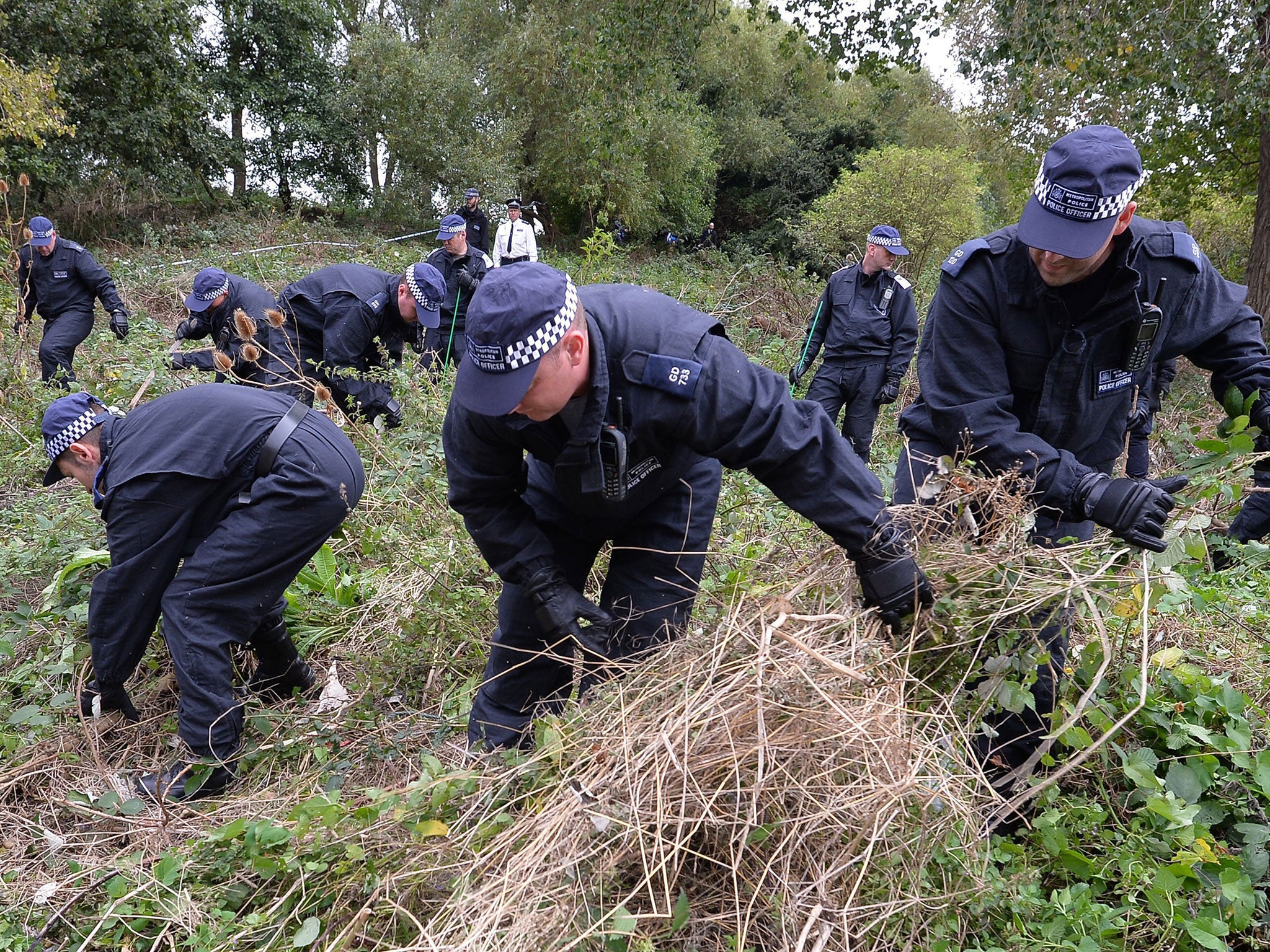Alice Gross search: How technology is transforming police operations to find missing people
Police search teams have come in for more criticism. Paul Peachey looks at the specialists and the tasks they face

The facts on offer were scant: the missing woman was supposed to have met a friend but never turned up. She had family and health problems and was worried about losing her job. But the routine missing person case was swiftly upgraded to the highest risk of danger when police officers discovered she had been seen arguing with a white van driver.
These were the few details so far gleaned by small teams of officers tasked with trying to work out if they are dealing with a murder case or needed to scale up a hunt for a missing and distressed woman.
Although it shares many elements with those of the 300,000 people reported missing every year, the case of the 24-year-old was an exercise for men and women training to lead specialist search teams for British police forces.
As the Metropolitan Police faced accusations of delays in the hunt for the teenager Alice Gross and the prime suspect for her murder, The Independent was given a behind-the-scenes look at the centre that has trained the country’s 6,600 search specialists.
As the officers involved in the day-long exercise considered what to do next, every decision was being monitored on 19 television screens in a police control room. Trainers listened in to their conversations and cameras could zoom in to examine a doodle on a piece of paper to track what they were thinking.
These are among the latest training techniques being used at a specialist search centre that was set up after the failure to find an IRA bomb hidden for nearly a month beneath the floorboards of the Grand Hotel in Brighton resulted in the deaths of five people in 1984 and a close escape for Margaret Thatcher.
And yet the expertise of police search teams has again come under scrutiny after Alice’s body was found in the River Brent, close to where she was last seen in September, amid questions over the length of time that it took. The body of the prime suspect, Arnis Zalkalns, was found on October 4, in a state of decomposition in dense woodland, a month after he went missing.
The Metropolitan Police launched a strong defence of its operations last week, citing a lack of national expertise and experience in such cases. “This has been a huge search and absolutely what would have been success in that search would have been finding Alice alive,” Craig Mackey, the Met deputy commissioner, told the London Assembly on Thursday. “But being absolutely realistic, when you have search parameters of this size it takes an awful long time. And there is not a huge amount of experience across the country of doing this.”
The Met said the search had been one of the most complex in modern times – and the biggest since the aftermath of the July 7 bombings of the London transport network.
Technology has transformed the search for missing people, senior officers said, with ground-penetrating radar and sonar for underwater searches. Search mapping software allows detectives to collate detailed activity about the target from last sightings, known haunts and other personal information, helping to focus searches on the most likely areas.